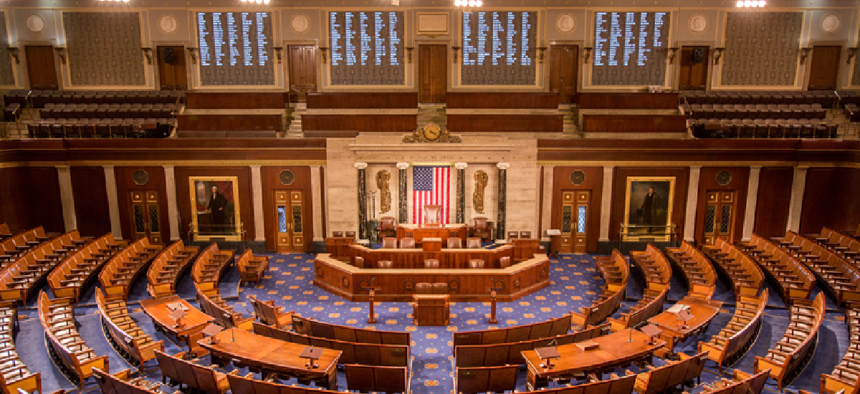House Majority Leader backs remote voting

Downplaying security concerns, Rep. Steny Hoyer said conducting House business through video teleconference software was his "clear preference" to ensure continuity of Congress during the COVID-19 crisis.

With the House of Representatives set to return this week, supporters of remote voting got a boost when Majority Leader Steny Hoyer (D-Md.) said it was his "clear preference" to allow members to cast their votes and conduct most regular committee business through video teleconferencing software.
In a letter sent to House Rules Committee Chair Jim McGovern (D-Mass.) and House Administration Chair Zoe Lofgren (D-Calif.), Hoyer downplayed concerns over cybersecurity, saying that the use of teleconferencing technology offered a clear and simple way to record the will of individual members.
"These systems allow one to see and identify the person who is speaking and hear what is being said with little doubt about the identity of the participant," Hoyer wrote. "Used for the purposes of Floor and committee business, there would be little doubt who voted aye or nay. As, invariably, such action is performed in public and is public record, the issue of security appears to be minimal."
Hoyer's position seemingly puts him at odds with House Speaker Nancy Pelosi (D-Calif.), who has largely resisted such proposals over the past month. She tapped McGovern and Lofgren to explore different options for keeping the body running during the pandemic, including remote voting, but expressed serious concerns about the constitutionality and security of allowing members to electronically vote.
A report issued by McGovern's committee last month was skeptical about the prospects of standing up a new system or app, but last week he came out in favor of a proxy system that would allow members of Congress who are physically present in the Capitol to vote on behalf of other colleagues.
A Rules Committee aide told FCW that under McGovern's proposal, members would be able to convey their instructions over phone, email or other communications methods, and there would be no limit for how many members can be represented by a single proxy. However, a proxy voter would need to communicate with each member before every vote, even procedural ones. McGovern endorsed this option because, in his view, there is past precedent for proxy voting and less concern about constitutional challenges in court.
The aide acknowledged that could make it difficult or impractical for committees to hold markups for legislation and other types of hearing that typically rely on rapid back and forth dialogue between members and staff, spontaneous motions and ad-hoc votes. Hoyer said the Rules Committee proposal should only represent "a first step" towards a larger move to modernize Congress for the digital age.
"While any distance-voting is less optimal that in-person voting or debating in committee or on the Floor of the House, the sound and image of the Member doing so virtually is far superior to the utilization of proxies," Hoyer wrote.
While the House's prime responsibility is voting and passing legislation, Hoyer and good government groups called for Congress to go further and ensure there are rules and technology in place that will allow them to resume their oversight role of the executive branch.
On April 20, 24 organizations spanning the ideological spectrum wrote to House leaders to urge them to adopt new rules, warning that the Trump administration was taking advantage of their absence and noting it could be months or years before the crisis abates and the House resumes normal operations.
As the depth of the coronavirus crisis has become more apparent and the prospects for substantial in-person deliberations has become more uncertain, members in the House and Senate have increasingly warmed to the idea of updating the way Congress does business. More than a hundred members of the House favor some form of remote voting, according to First Branch Forecast, and former members and non-profits conducted simulated hearings over Zoom and other video conferencing software last week to test-run the idea.





